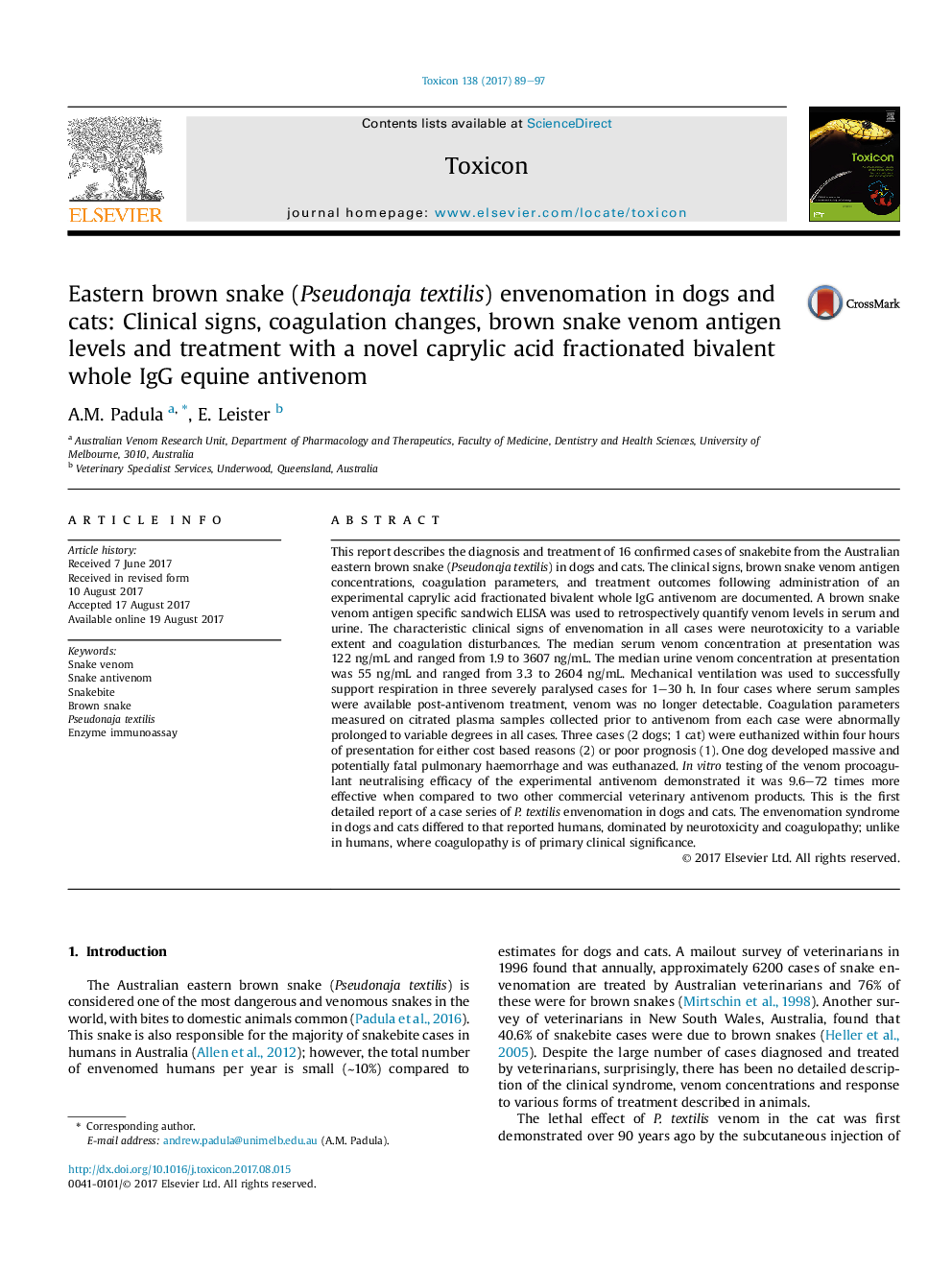| کد مقاله | کد نشریه | سال انتشار | مقاله انگلیسی | نسخه تمام متن |
|---|---|---|---|---|
| 5519209 | 1544098 | 2017 | 9 صفحه PDF | دانلود رایگان |
- Case series of 16 brown snake envenomation (Pseudonaja textilis) in dogs and cats.
- Neurotoxicity is a clinical feature in dogs and cats in contrast to humans.
- Mechanical ventilation required to support respiration in some severe cases.
- Coagulation changes present in all cases.
- Potentially fatal haemoptysis observed in one case leading to euthanasia.
This report describes the diagnosis and treatment of 16 confirmed cases of snakebite from the Australian eastern brown snake (Pseudonaja textilis) in dogs and cats. The clinical signs, brown snake venom antigen concentrations, coagulation parameters, and treatment outcomes following administration of an experimental caprylic acid fractionated bivalent whole IgG antivenom are documented. A brown snake venom antigen specific sandwich ELISA was used to retrospectively quantify venom levels in serum and urine. The characteristic clinical signs of envenomation in all cases were neurotoxicity to a variable extent and coagulation disturbances. The median serum venom concentration at presentation was 122 ng/mL and ranged from 1.9 to 3607 ng/mL. The median urine venom concentration at presentation was 55 ng/mL and ranged from 3.3 to 2604 ng/mL. Mechanical ventilation was used to successfully support respiration in three severely paralysed cases for 1-30 h. In four cases where serum samples were available post-antivenom treatment, venom was no longer detectable. Coagulation parameters measured on citrated plasma samples collected prior to antivenom from each case were abnormally prolonged to variable degrees in all cases. Three cases (2 dogs; 1 cat) were euthanized within four hours of presentation for either cost based reasons (2) or poor prognosis (1). One dog developed massive and potentially fatal pulmonary haemorrhage and was euthanazed. In vitro testing of the venom procoagulant neutralising efficacy of the experimental antivenom demonstrated it was 9.6-72 times more effective when compared to two other commercial veterinary antivenom products. This is the first detailed report of a case series of P. textilis envenomation in dogs and cats. The envenomation syndrome in dogs and cats differed to that reported humans, dominated by neurotoxicity and coagulopathy; unlike in humans, where coagulopathy is of primary clinical significance.
Journal: Toxicon - Volume 138, November 2017, Pages 89-97
